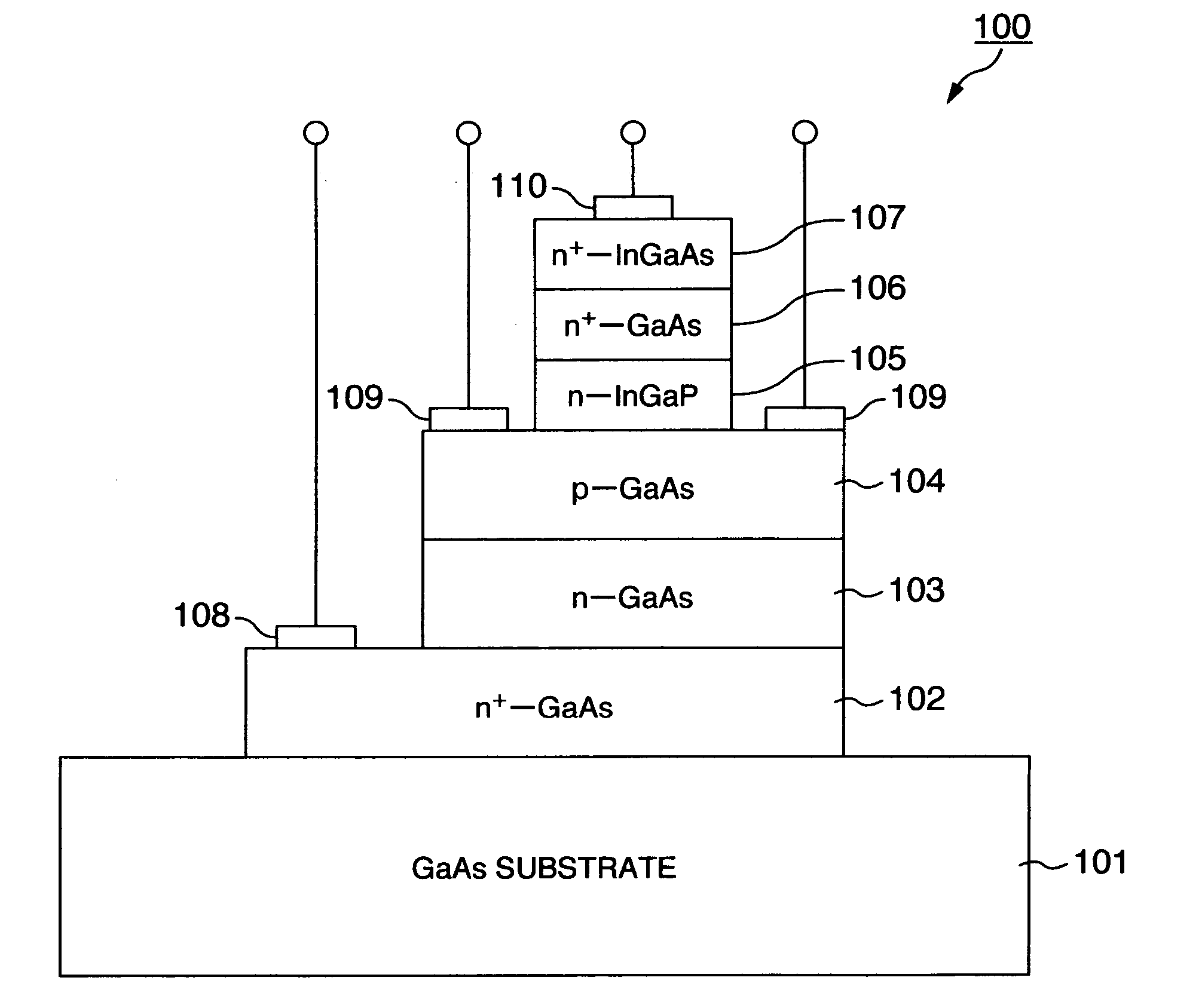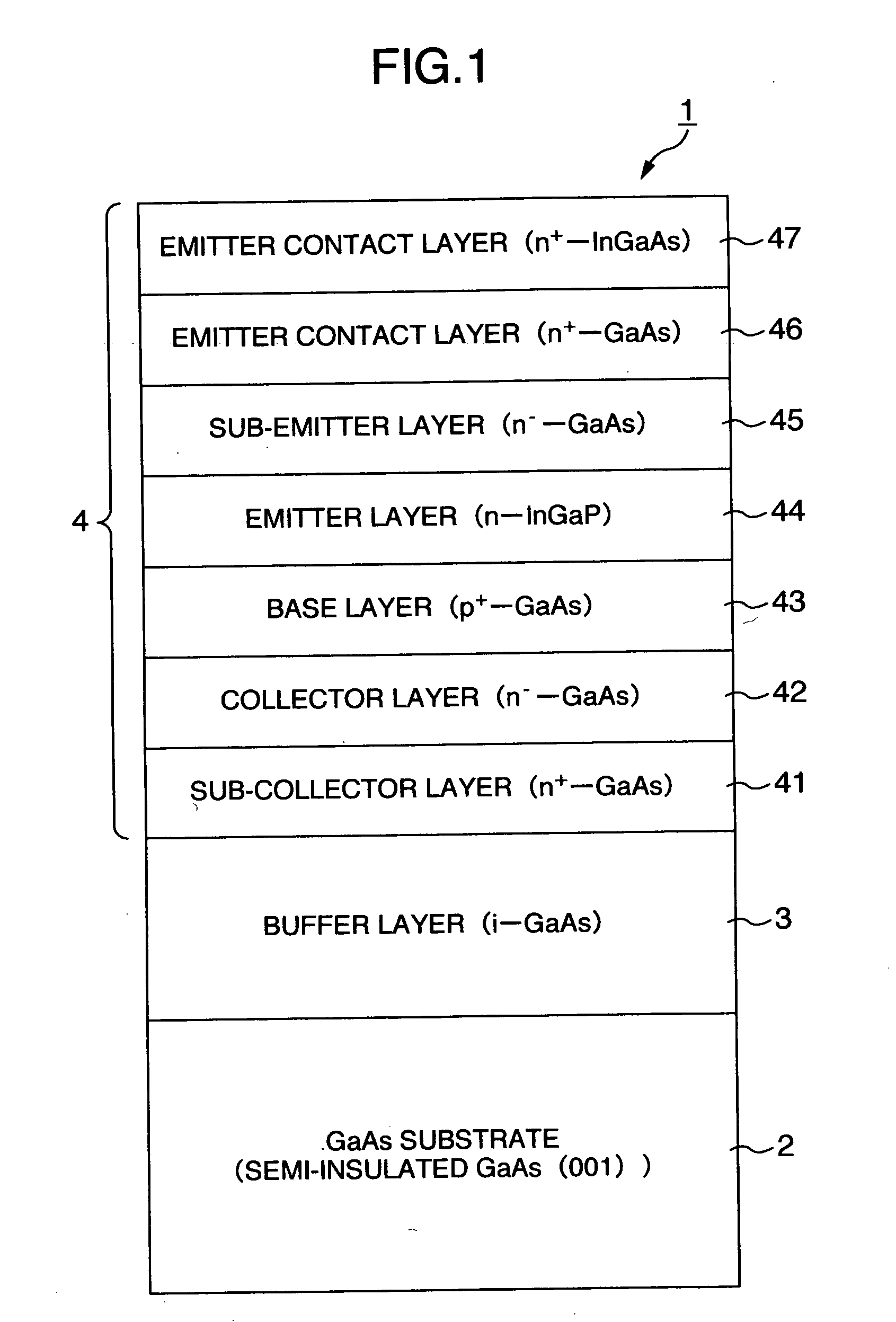Method for manufacturing compound semiconductor wafer and compound semiconductor device
a semiconductor wafer and semiconductor technology, applied in the direction of semiconductor devices, electrical equipment, basic electric elements, etc., can solve the problem of difficult to control the carrier concentration to a desired valu
- Summary
- Abstract
- Description
- Claims
- Application Information
AI Technical Summary
Benefits of technology
Problems solved by technology
Method used
Image
Examples
example 1
[0045] The growth conditions of base layer 43 were as follows. Growth temperature: 620° C.; raw material of Group III: trimethylgallium (TMG); raw material of Group V: arsine (AsH3); dopant for forming p-type base layer: CBrCl3; and V / III ratio: 0.9. Under the above growth conditions, the carrier concentration of the base layer 43 of 3.6×1019 cm−3 was obtained by adjusting the doping amount of C as a dopant. The current gain β of the HBT device in this case was measured to obtain 180. Further, a ratio of current gain β / base sheet resistance BRs was measured to obtain 0.60.
example 2
[0046] An HBT device was produced under the same conditions as in Example 1, except that the V / III ratio was 0.7, and the current gain β of the HBT device was measured to obtain 215. Further, the life time of minority carriers in the base layer 43 was measured to obtain 230 psec. The ratio of current gain β / base sheet resistance BRs was measured to obtain 0.70.
PUM
 Login to View More
Login to View More Abstract
Description
Claims
Application Information
 Login to View More
Login to View More - R&D
- Intellectual Property
- Life Sciences
- Materials
- Tech Scout
- Unparalleled Data Quality
- Higher Quality Content
- 60% Fewer Hallucinations
Browse by: Latest US Patents, China's latest patents, Technical Efficacy Thesaurus, Application Domain, Technology Topic, Popular Technical Reports.
© 2025 PatSnap. All rights reserved.Legal|Privacy policy|Modern Slavery Act Transparency Statement|Sitemap|About US| Contact US: help@patsnap.com



